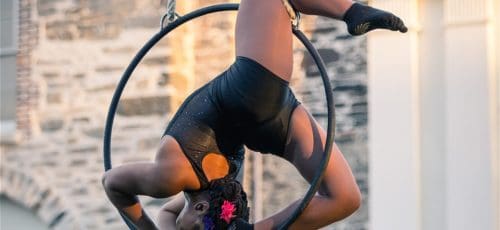Because Y’all Love Naked Bodies So Much I Decided To Ref A Game of Skins vs. Skins
 Because the press has failed to remark on the penetration of au naturel into this year’s Live Arts and Fringe shows (read my sarcasm, then read the Inquirer’s most recent article on the same), I’ve decided to introduce a resolving flavor to the chatty pot of “No clothes; oh no!” “Take it off!” “You want to show your hoo has and joysticks in Penn’s city?”
Because the press has failed to remark on the penetration of au naturel into this year’s Live Arts and Fringe shows (read my sarcasm, then read the Inquirer’s most recent article on the same), I’ve decided to introduce a resolving flavor to the chatty pot of “No clothes; oh no!” “Take it off!” “You want to show your hoo has and joysticks in Penn’s city?”
Maybe a more valuable question to ask is: how can we begin to read the bodies we encounter at this year’s Live Arts Festival and Philly Fringe? How can we frame what we see? By mediating Alastair Mccaulay’s recent New York Times “Nakedness in Dance, Taken to Extremes” and CultureBot’s response to Mccaulay (by way of Jeremy M. Barker), I hope to begin to answer these questions, and craft some ridiculous metaphors while doing so.
After the jump: I use Russian dolls as claim-making devices, and how to discuss this with your fellow performance aficionados (hint: it’s during the free talkback that follows a show that rhymes with farguendo).
Mccaulay’s essay opens with a ditty: he remembers a strip show he went to see as a young, pre-critic man; he was “underwhelmed.” From here he forges a bridge to several examples of nakedness in contemporary dance, including the few but notable times that ballet has embraced the naked form.
In “Contemporary Dance Is Not Stripping,” Barker’s biggest point of contention with Mccaulay’s article is that it fails to be criticism at all. Mccaulay is tepid when addressing a hot-button issue, Barker argues, because the Times’s senior dance critic fails to fully recognize the complexity of nakedness in performance.
In considering art with a critical eye one needs to account for, Barker states, two viewing points from which to see the naked body in performance: the first is the outpost, or the viewer outside of a critical art language: the pedestrian. The outpost is inclined to digest the naked form as an erogenous zone, to see nothing but sex when there is anything but clothes; Barker writes, “We’re all also aware that nudity, outside the arts, often carries a certain stigma. I’d venture to guess that for many artists, this hits close to home in terms of family members for whom nudity onstage and in public is interpreted in solely pornographic terms.” The second viewing point is the inpost, or the discourse within dance criticism developed by dance practitioners and arts theorists. The inpost, Barker writes, acknowledges the body as a launching pad for multiples avenues of discussion, including economic, political and yes, erotic considerations.
So, there’s the insider, who through practice has learned to read art—and the naked body in art—on many levels, and there’s the outsider, whom porn has taught to read the naked body as sex. This though, Barker concedes, is a “superficial dichotomy.” You can’t have one without the other, or you can’t make good art, or be a mindful artist, without acknowledging the outsider; in doing so, artists and art critics are willing to recognize the naked body as erotic because so many other people do. The idea is not unlike two Matryoshka dolls: before considering the one inside, you must open and address the exterior, and larger, and more widely recognized doll.
Barker writes, “But even without a resolution, we know that these two perspectives exist and clash within the field. And anyone who actually cares about the art form grapples with these issues, which unfold and blossom into increasingly complex configurations and intersections as soon as we look deeper than this superficial dichotomy. It’s all extraordinarily complex, as indeed it should be: Once we consider the issue of ‘nudity’ from this perspective, we realize that we’re not actually talking about nudity at all, but rather arriving at the body as a location of political, economic, and erotic conflicts playing out both within the art form and outside it, in the broader culture.” So, okay let me revise—it’s like taking a handsaw to the two Matryoshka dolls, and watching which pieces fall beside one another, and which pieces bang against one another and splinter.
So, back to Mccaulay. Remember him? His term as the Times’ dance critic is almost as lengthy as the criticism he received for calling a ballerina overweight in his 2010 review of the New York City Ballet’s The Nutcracker. Barker’s upset with Mccaulay, but not because of the “one too many sugar plums” comment, but instead because in his article about nakedness in dance Mccaulay tries to find “non-existent middle-ground between two opposing camps: Acceptable to no one and based on misrepresentations of both, it’s the most pointless space to occupy.” To return to my Russian (and at this point exhausted) metaphor, Mccaulay tries to occupy the space between one Matryoshka doll and the next, and in doing so his article falls short of its critical baptism.
I will protest though that Barker’s reasoning unravels slightly at this point. Having argued that artists need to consider the pedestrian view in their art making (an idea he refers to as The Piss Christ Test), he negates himself when he writes of these viewpoints as “two opposing camps”; rather, it seems more appropriate to refer to the outsider’s view as more thinly sliced than the insider’s, or the art practitioner’s.
Barker offers Mccaulay a ‘fix,’: “In fact, if he were to have rejiggered the essay to be about the ‘erotic’ in dance, he may have had a leg to stand on, but still there’d be no shortage of blindspots, ahistoricisms, and a not-so-subtle misogyny problematizing his analysis.” Yet, I would argue that Mccaulay’s problem is beyond a tweak. He does not allot the subject enough space (Barker agrees, and writes that a book-length project is more fitting), but more importantly Mccaulay doesn’t focus on one specific show, and in attempting a wide-arching review of nakedness in dance (although he mentions recent dance performances that have employed the naked body, such as Keith Hennessy’s Crotch and Christopher Williams’ Gobbledygook, besides articulating his personal reaction to them, he fails to draw any critical conclusions), closes on possibly the vaguest sentence in all of art criticism and occupies Barker’s “most pointless space”: Mccaulay writes, “For now, let’s note that the current extensive use of exposed flesh in dance is opening up new areas of thought and feeling.” That is to say, naked bodies make us think and feel new things—is that not the point of all art?
Nakedness is another political tool within performance, such as language or site or sound, and it is not an anomaly. Barker writes, “Within the field of contemporary performance, particularly dance, nudity is, in and of itself, so common as to be unremarkable.” Criticism then is productive only when it focuses on how nakedness is employed in a dance, and like in all forms of art, how well the tool works to build, deconstruct, and rearrange its subject.
“Body Politics in Arts and Culture Today,” a panel discussion moderated by Linda Carusa Haviland, founder and director of the dance program at Bryn Mawr University, runs September 16 at 2:00 pm on the Arcadia Stage at Arden Theatre Company following a performance of Arguendo.
–Audrey McGlinchy


